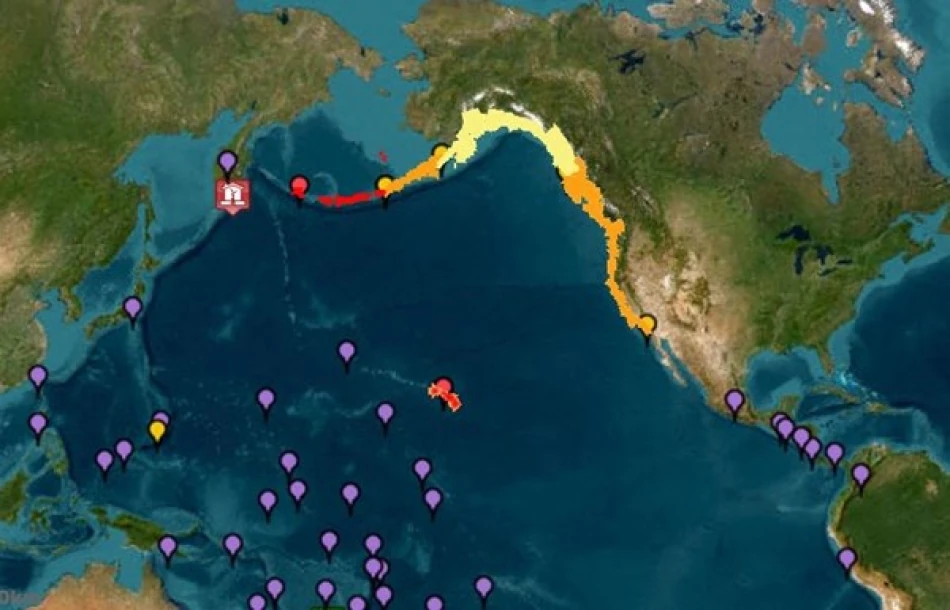
Powerful 8.8 Earthquake Triggers Tsunami Across Russia, Japan; Hawaii on High Alert
Massive 8.8 Earthquake Strikes Russian Kurils, Triggering Pacific-Wide Tsunami Warnings
A powerful 8.8-magnitude earthquake off Russia's Kamchatka Peninsula has generated tsunami waves across the Pacific Rim, marking the strongest global seismic event since Japan's devastating 2011 disaster. The quake struck the Kuril Islands region early Tuesday, sending waves toward Japan, Hawaii, and the U.S. West Coast while causing significant damage in the sparsely populated Russian territories.
Immediate Impact and Regional Response
The earthquake occurred at 8:25 AM Japan time, with its epicenter located approximately 119 kilometers southeast of Petropavlovsk-Kamchatsky, a Russian city of 180,000 residents on the Kamchatka Peninsula. The U.S. Geological Survey initially rated the quake at 8.0 before upgrading it to 8.8, placing it at a relatively shallow depth of 20.7 kilometers.
In Petropavlovsk-Kamchatsky, the tremor caused buildings to sway and cars to rock in the streets. Power outages and mobile phone service disruptions followed, while several residents sought medical attention, though no serious injuries were reported according to regional health authorities.
Tsunami Waves Begin Reaching Populated Areas
The first tsunami wave, measuring approximately 30 centimeters, reached Nemuro city on Japan's Hokkaido island eastern coast. In the Russian settlement of Severo-Kurilsk, the main population center in the Pacific-facing Kuril Islands, residents successfully evacuated to higher ground as the initial wave struck the coastal area.
Pacific-Wide Alert System Activated
The Pacific Tsunami Warning Center issued urgent advisories across the ocean basin, predicting waves between one and three meters above normal tide levels for coastal areas in Hawaii, Chile, Japan, and the Solomon Islands. Some Russian and Ecuadorian coastal zones face the possibility of waves exceeding three meters.
Hawaii and U.S. West Coast Preparations
Hawaiian authorities declared that all islands faced potential tsunami damage, issuing warnings for residents to "take immediate action to protect life and property." Oregon's emergency management agency predicted smaller waves of 30-60 centimeters beginning around 11:40 PM local time, cautioning that while not catastrophic, these could create dangerous currents and surges for anyone near the water.
Similar warnings extended along North America's entire western seaboard, from British Columbia through Washington state to California, reflecting the earthquake's significant energy release across the Pacific basin.
Historical Context and Global Significance
This seismic event represents the most powerful earthquake worldwide since the March 2011 Tohoku disaster that devastated northeastern Japan with a 9.0-magnitude quake. That catastrophe generated a massive tsunami and triggered the Fukushima nuclear plant meltdowns, fundamentally altering Japan's energy policy and global nuclear safety protocols.
The Kamchatka-Kuril region sits along the highly active "Ring of Fire," where the Pacific Plate subducts beneath the North American and Eurasian plates. This geological setting regularly produces significant seismic activity, though earthquakes of this magnitude remain relatively rare globally.
Seismic Monitoring and Aftershock Activity
Multiple aftershocks followed the main event, with some reaching 6.9 magnitude—powerful enough to cause additional damage in already weakened structures. The sequence demonstrates the massive energy release and continued tectonic adjustment following the primary rupture.
Emergency Response and Risk Assessment
The relatively remote location of this earthquake likely prevented the catastrophic casualties seen in more populated regions during similar events. However, the tsunami's trans-Pacific reach underscores how major seismic events in one region can threaten coastal communities thousands of kilometers away.
Modern tsunami warning systems, developed and refined following previous disasters including the 2004 Indian Ocean tsunami and 2011 Japan event, demonstrated their effectiveness in providing advance notice to vulnerable populations. The coordinated international response reflects decades of investment in Pacific-wide monitoring networks and communication protocols.
While this earthquake's remote epicenter limited immediate human impact, it serves as a stark reminder of the Pacific Ring of Fire's continued volatility and the interconnected nature of seismic risks across the world's largest ocean basin.
Most Viewed News

 Layla Al Mansoori
Layla Al Mansoori






